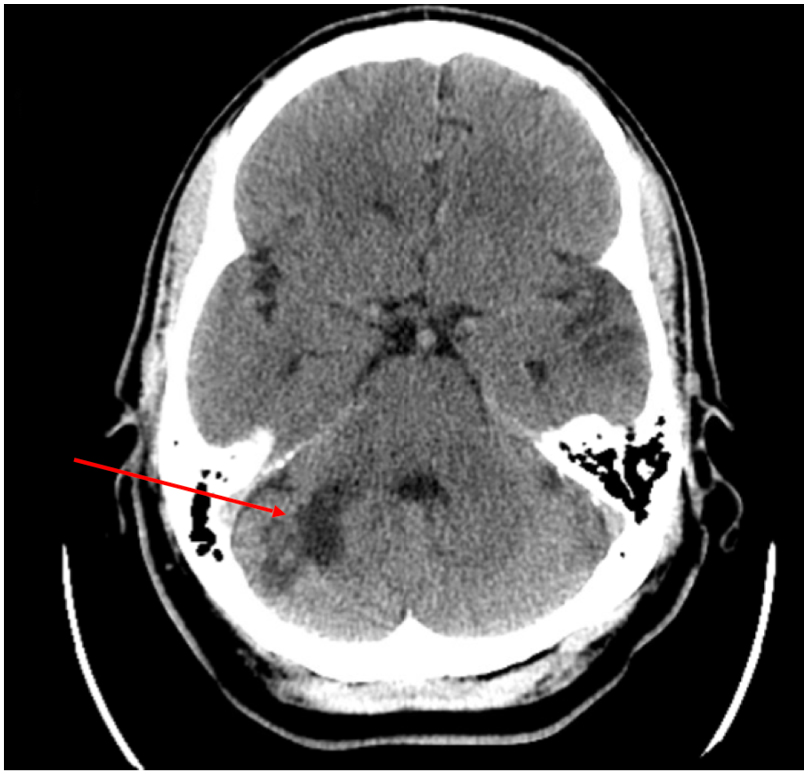BACKGROUND
Neurosyphilis can manifest in various ways, often complicating the clinical picture.1 This condition is frequently overlooked, particularly when presenting alongside stroke symptoms.2 While cerebrospinal fluid (CSF) venereal disease research laboratory (VDRL) is the gold standard for diagnosis, it is known to have low sensitivity and can yield false negatives in patients with compatible symptoms.3
CASE PRESENTATION
A 45-year-old incarcerated male with a medical history of hypertension, Type 2 diabetes, and hyperlipidemia presented with acute onset altered mental status and expressive aphasia.4 Imaging studies, shown in Figure 1, revealed an acute/subacute left middle cerebral artery infarct with proximal inferior trunk occlusion and a chronic right cerebellar infarct, prompting an extensive workup for stroke in younger patients.

Figure 1: CT demonstrating a region of encephalomalacia within the right cerebellar hemisphere, suggesting chronic infarction.
Further evaluation through a cerebral angiogram revealed subtle irregularities of the intracranial arteries. As a result, a lumbar puncture was performed, which indicated slightly elevated protein and leukocyte counts. Serological testing confirmed latent syphilis. Despite a negative CSF VDRL test, the diagnosis of neurosyphilis was established based on the clinical presentation and positive treponemal blood test. 5 The patient was treated successfully with a 14-day course of intravenous penicillin.
CONCLUSION
This case emphasizes the necessity of considering neurosyphilis in patients presenting with atypical stroke symptoms, particularly young patients with stroke and those with risk factors, such as incarcerated populations, unprotected sex, and multiple sexual partners.6 As neurological complications are often disabling, early recognition along with a multidisciplinary approach is crucial for preventing long-term neurological complications and preserving quality of life, while reinforcing the evolving understanding of neurosyphilis in clinical practice.






